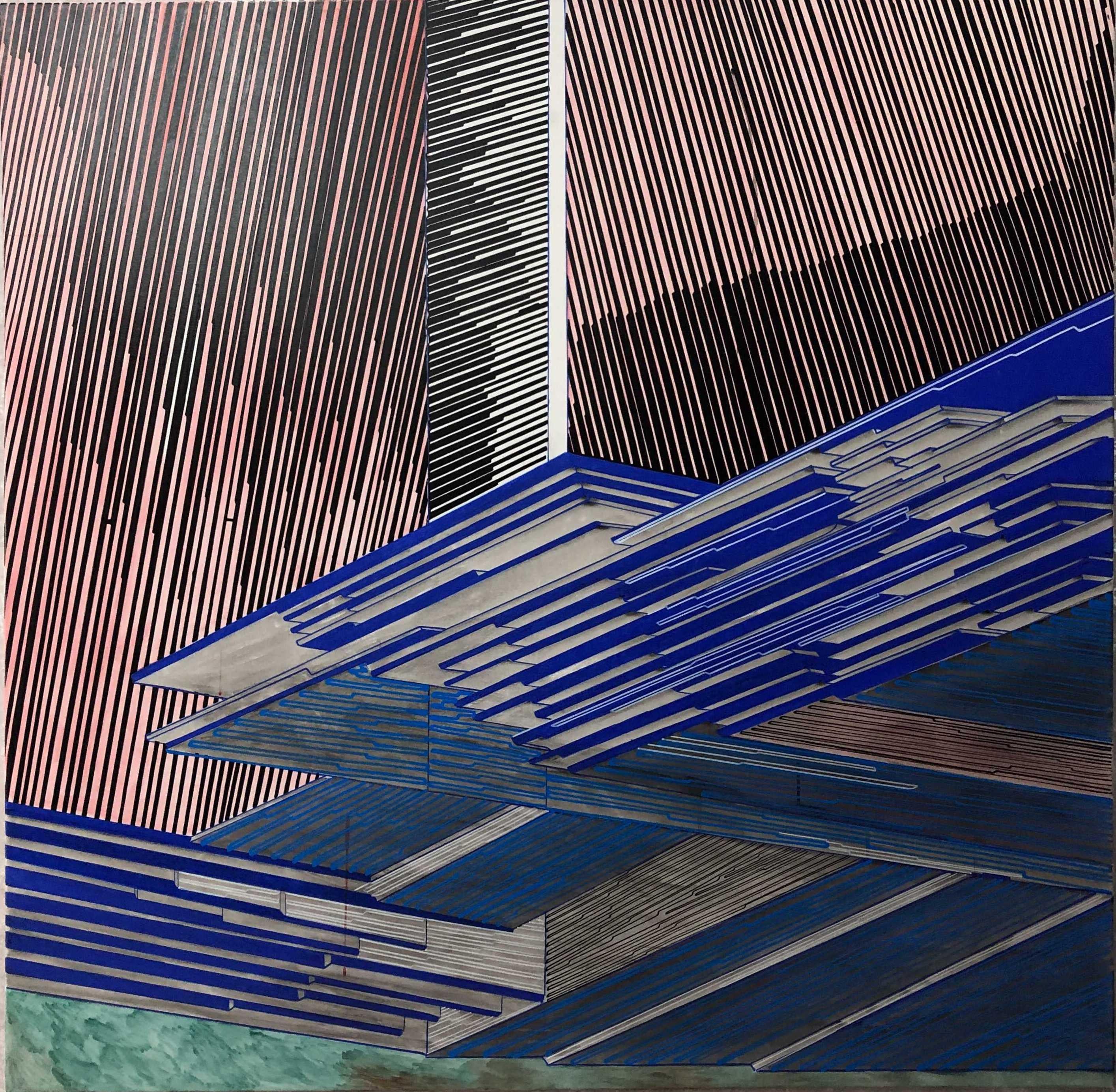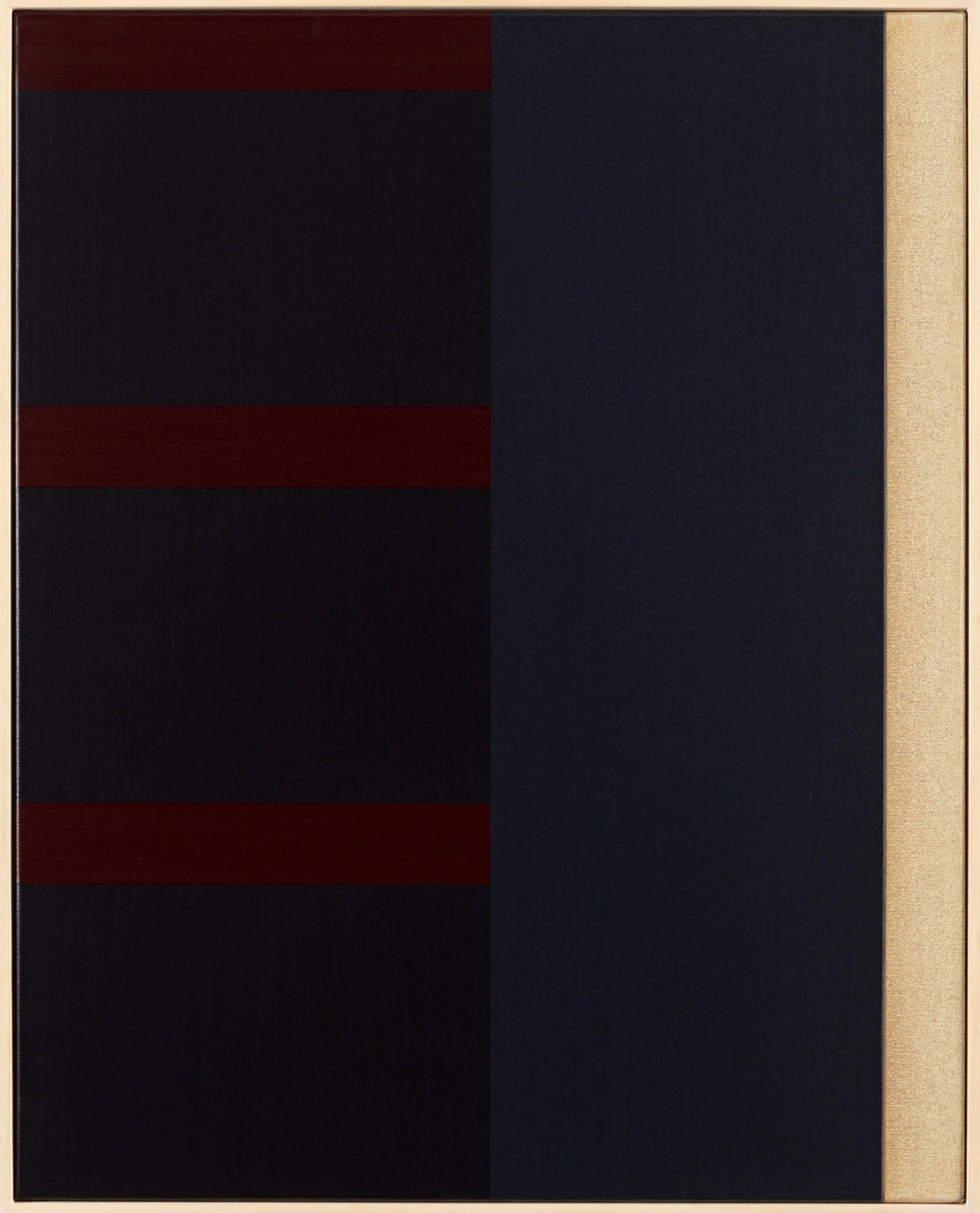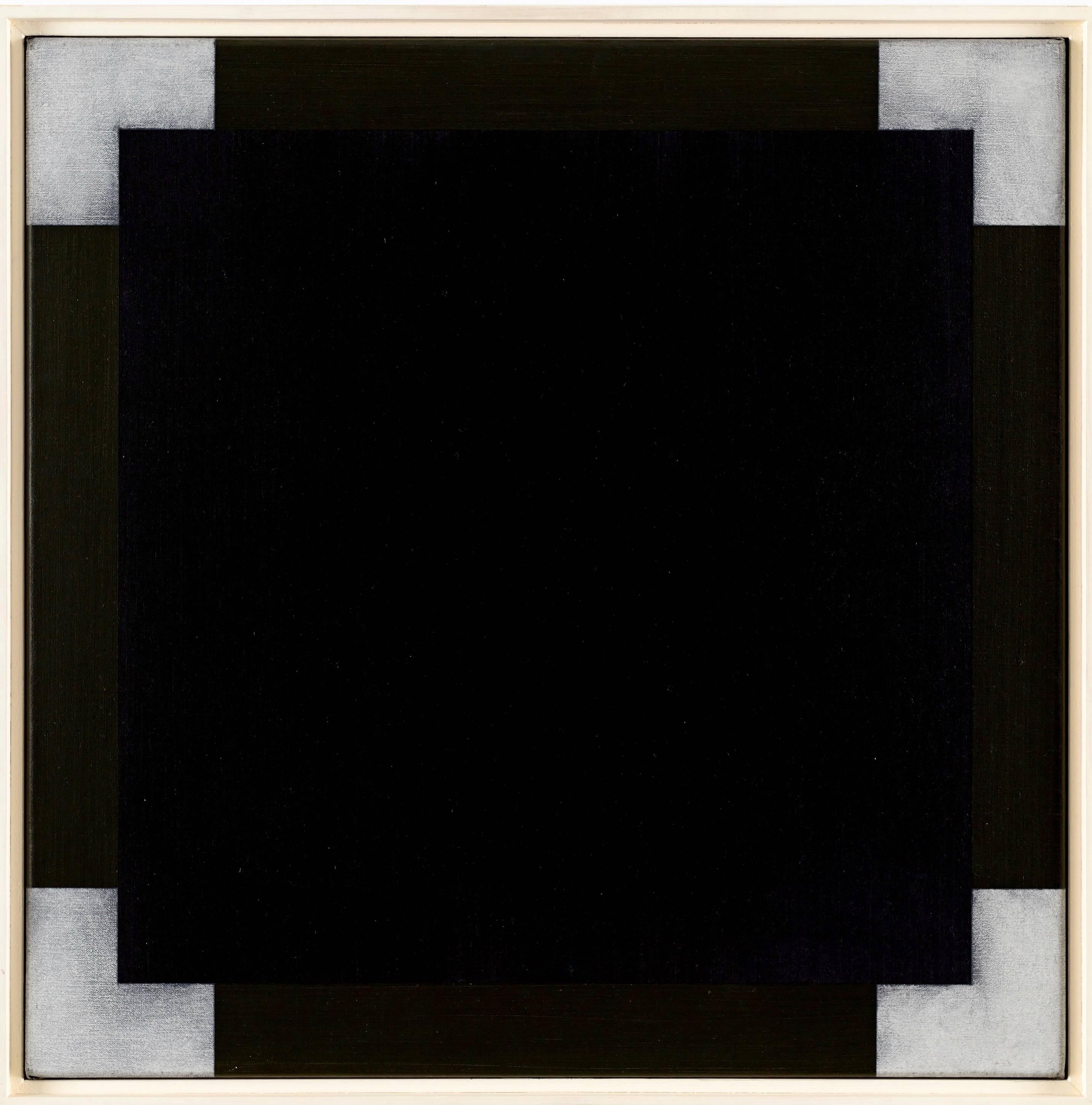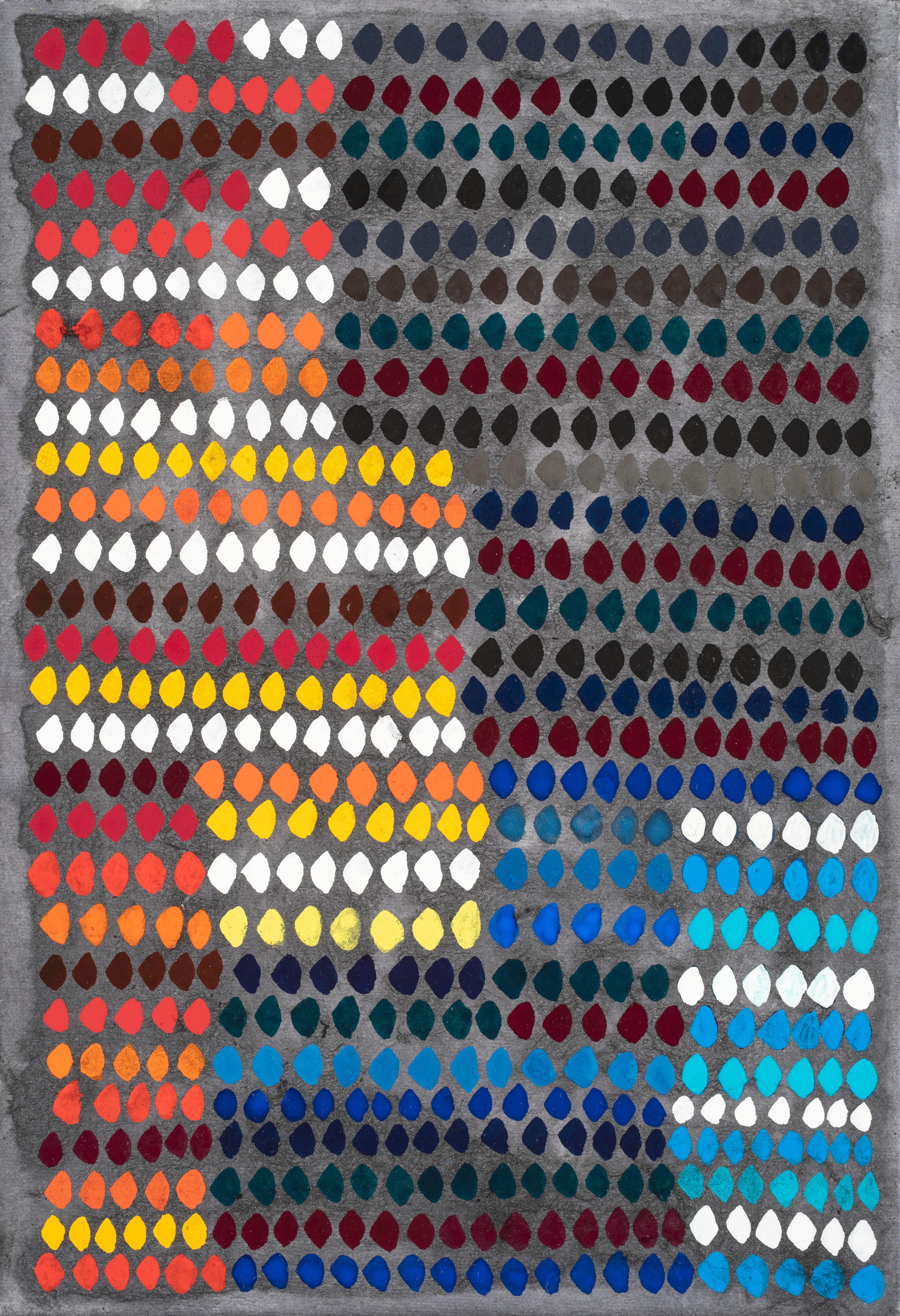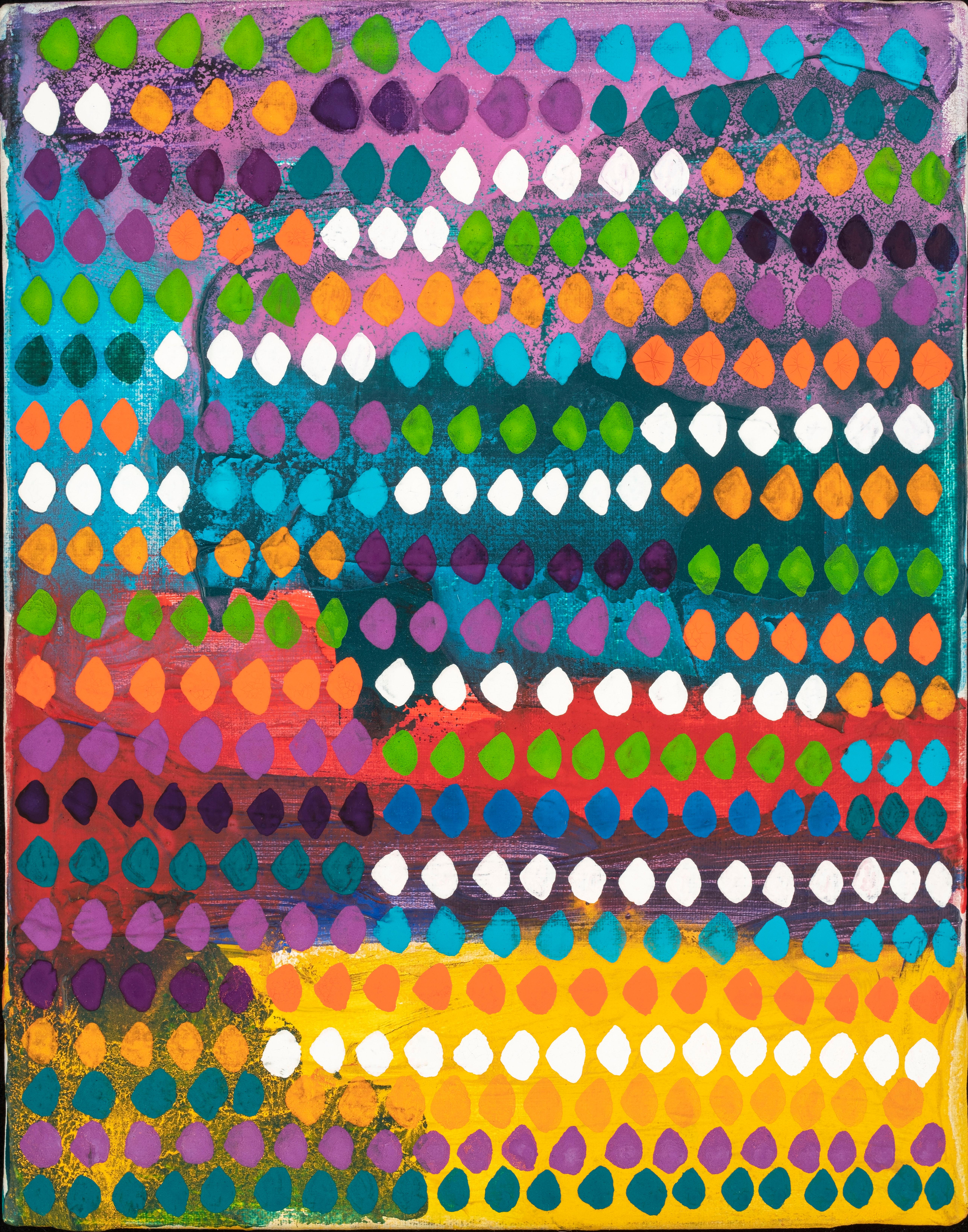Items Similar to Composition 209 (Abstract Bauhaus painting)
Want more images or videos?
Request additional images or videos from the seller
1 of 11
Werner DrewesComposition 209 (Abstract Bauhaus painting)1939
1939
About the Item
Werner Drewes (1899-1985). Composition 209, 1939. oil on canvas, 20 x 24 inches; 28 x 32 inches in original frame. Signed and dated with artist monogram lower left and again on verso. Orignal paper label affixed on verso. Inscribed in ink lower stretcher bar.
Conservation at center left. Repair of 2-inch vertical tear. Inpainting in this area only.
Werner Drewes was born in Canig, Germany, and began studying art in 1920 at the Stuttgart School of Architecture. A year later he transferred to the Stuttgart School of Arts and Crafts. From 1921 to 1922, he studied with Paul Klee, Johannes Itten, and Oskar Schlemmer at the Bauhaus in Weimar. After visiting the United States in 1924 and 1925, Drewes returned to work at the Bauhaus. In 1930 he came back to the United States, where he was introduced by Wassily Kandinsky to Katherine C. Dreier, a founder of the Societe Anonyme, and exhibited his work in Buffalo, New York. From 1934 to 1936, Drewes taught at the Brooklyn Museum under the auspices of the WPA Federal Art Project. In 1936, the year he became an American citizen, Drewes joined the American Artists Congress, exhibited at Black Mountain College in North Carolina, and helped found the American Abstract Artists group. A member of the faculty at Columbia University in New York from 1937 to 1940, Drewes also served as director of graphic art for the WPA Federal Art Project in New York in 1940. In 1944 he studied printmaking at Stanley William Hayter’s Atelier 17. The following year he taught at Brooklyn College. In 1946 he joined the faculty of the School of Fine Arts at Washington University in St. Louis, where he remained until 1965.
Joann Moser Singular Impressions: The Monotype in America (Washington, D.C. and London: Smithsonian Institution Press for the National Museum of American Art, 1997)
The son of a Lutheran minister who was interested in archaeology and the natural sciences, Werner Drewes believed that art provided an avenue to understanding the mysteries of life:
“What is the mystery underlying the Architecture of our Universe? What are the laws which create the pattern of the frostwhich forms on our windows? What causes the stars to stay in their orbit? What is it which creates joy and sorrow within us?… All these are problems belonging to the world we live in and which should concern the artist, as well as those problems of sunlight or the growth of a tree. But art is also a world with its own laws, whether they underlie a painting of realistic or abstract forms. …”
“To create new universes within these laws and to fill them with the experiences of our life is our task. … When they convincingly reflect the wisdom or struggle of the soul, a work of art is born.”(1)
These words, written in 1936, provide a framework for understanding Drewes’s work throughout his life. From his student days, he was fascinated with the formal possibilities of line and color. Yet, he was unwilling to forego the profound expressive potential of thematic motifs. Drewes moved easily between pure abstraction and expressionistic figuration, occasionally using highly energized abstract forms to express powerful emotions, as in his 1934 woodcut series, It Can’t Happen Here.
Following military service in World WarI, Drewes studied architecture and design in Berlin and Stuttgart. But he was soonattracted to the experimental freedom and the notion of the unity of the arts associated with the Bauhaus curriculum. In 1921, he enrolled in classes with Johannes Itten, Paul Klee, and Oskar Schlemmer. Unsettled yet as an artist, in 1923 Drewes began several years of world travel, initially to Italy and Spain, where he studied Veronese, Tintoretto, Velazquez, and El Greco. His wanderjahren then took him to Latin America (he had exhibitions in Buenos Aires and Montevideo), the United States, the Orient, and finally, via the trans-Siberia railroad, through Manchuria, Moscow, and Warsaw, back to Germany.
In 1927, Drewes returned to the Bauhaus, which had moved from Weimar to Dessau. But he found that its emphasis, as well as its location, had changed. The rather loose, experimental phase of the school’s early years had yielded to a firmer commitment to design, to the potential for uniting art and technology, and to the artist’s “new” social role in molding society.(2)
In spite of his preference for the earlier days, Drewes resumed his studies with Klee and Schlemmer. He attended Wassily Kandinsky’s weekly painting classes and became close friends with Lyonel Feininger, Moholy-Nagy, and Josef Albers. He left the following year, however, at a time when the Bauhaus was in turmoil. He worked independently and taught, and in 1930, Drewes settled in New York. Kandinsky provided an introduction to Katherine Dreier, an abstract artist and founder of the Société Anonyme, who immediately began to include Drewes’s work in the group’s exhibitions.(3) He subsequently taught at the Brooklyn Museum (under the sponsorship of the WPA’s Federal Art Project) and at Columbia University. In 1940 he was appointed director of the WPA’s graphic art division in New York. In 1946, after additional teaching posts at Brooklyn College and at Moholy-Nagy’s Institute of Design in Chicago, Drewes accepted a position at Washington University in St. Louis. He remained there until his retirement in 1965.
The obvious kinship between Drewes’s Pointed Brown and Floating Circles and Kandinsky’s paintings of the mid 1920s is more than a testament of respect from student to master. After a friendship begun at the Bauhaus, Kandinsky became Drewes’s artistic mentor. The two corresponded frequently in the years after Drewes settled in New York, and the young Drewes assisted with Kandinsky’s New York exhibitions. Kandinsky’s letters are filled with news of the Bauhaus, the worsening political situation in Germany, and, when Drewes sent photographs, of reactions to his recent work. Drewes’s frequent practice of painting thinly, which in this painting allows the woodgrained panel to suggest the organic movement of ocean in the sea-green foreground, is an aspect of Drewes’s technique that Kandinskyespecially admired.(4)
A founding member of the AmericanAbstract Artists (by one account Drewes showed Arshile Gorky the door when the Armenian immigrant stalked out of an early meeting), Drewes exhibited more frequently in commercial galleries and museum exhibitions than did many of his friends within the group.(5) Drewes often received positive reviews, and his work occasionally won prizes during these difficult years.(6) He remained actively involved during the organization’s early days and provided support and encouragement to his fellow abstract artists.
- Creator:Werner Drewes (1899-1985, American)
- Creation Year:1939
- Dimensions:Height: 28 in (71.12 cm)Width: 32 in (81.28 cm)Depth: 1 in (2.54 cm)
- Medium:
- Movement & Style:
- Period:
- Condition:
- Gallery Location:Wilton Manors, FL
- Reference Number:1stDibs: LU245210686712
About the Seller
4.9
Vetted Seller
These experienced sellers undergo a comprehensive evaluation by our team of in-house experts.
Established in 2007
1stDibs seller since 2015
322 sales on 1stDibs
Typical response time: 5 hours
- ShippingRetrieving quote...Ships From: Wilton Manors, FL
- Return PolicyA return for this item may be initiated within 7 days of delivery.
More From This SellerView All
- Industrial CompositionBy Murray HantmanLocated in Wilton Manors, FLMurray Hantman (1904-1999). Industrial Composition, c.1948-50. Oil on canvas measures 18 x 24 inches, 19 x 25 inches in original simple wood strip frame. Signed lower right. Excellent condition with no conservation. Exhibition label affixed en verso. Provenance: estate of Murray Hantman. This piece was included in the exhibition Murray Hantman: From Image to Abstraction, Portland Museum of Art, 2005. Anonymous lender. Biography: Shaped by his life experiences and a commitment to the practice of making art, the work of Murray Hantman represents a career of personal exploration and aesthetic refinement that took him from New York, to Los Angeles, back to New York and eventually to the serene, yet dramatic, coast of Maine where he worked as part of the artists’ colony on Monhegan Island. Born in Pennsylvania in 1904, Hantman’s family moved many times to follow his father’s business opportunities, eventually settling in New York. A childhood of economic instability and dislocation formed Hantman’s early years, making him independent and self-reliant from a very early age. Hantman’s father owned movie theatres and photography studios and, recognizing his son’s artistic ability, employed him to print and hand-color photographs as a child. When he was eleven and living in Michigan, a public school teacher arranged for Hantman to receive a scholarship to the Detroit Museum of Art School where after a year he was awarded another scholarship to study at the Detroit School of Design. He studied in Detroit for a year until his family abruptly moved to Alabama, interrupting his artistic and academic studies until the family moved to New York at the end of the first World War. As a young man, Hantman supported himself by working many different jobs in New York and New Jersey. Steady work with his brother at the Hartford and New Haven Railroad office in New York City finally allowed Hantman to pursue his artistic studies in a formal way. In 1928, he enrolled in the Art Students League and became part of a social circle of artists and activists. While at the Art Students League, Hantman worked with faculty members Boardman Robinson and Thomas Hart Benton on two mural projects. During the years around the Great Depression, Hantman worked in Los Angeles with a group of artists known as the Bloc of Painters. Recruited through an advertisement to attend a course on fresco painting, the Bloc group was headed by Mexican muralist David Alfaro Siqueiros who had recently been exiled from Mexico for political activism. Through his work with Siqueiros, Hantman became motivated by social and political issues and their creative expression. In 1934, Hantman returned to New York and found the community of artists there equally engaged in social justice issues. While enrolling at the newly-formed Artists’ Union to advocate for the labor rights of creative workers, Hantman met sculptor Jo Levy who would become his wife. Like many artists at the time, Hantman found work through the Federal Art Project as a member of the Easel Painting Division which strove to create “works of art for the public which have a definite social value to the community”. (1) Along with the work he exhibited as a member of the WPA group, Hantman’s personal work from this period was in the style of Social Realism he learned from Siqueiros. Hantman and his wife, Jo Levy, believed in creating art for the public good. Their Artists’ Union friends and colleagues from the Federal Art Project formed the nucleus of their social circle and would become the community of artists who worked together during summers on Monhegan Island off the coast of Maine. In 1945, Hantman had his first solo painting show at Marquie Gallery in New York, and visits Monhegan Island for the first time. The following summer, he and Levy spend the summer in Maine, and would continue to do so for the next thirty years. The landscapes and seascapes of Maine would become a central subject in his work after 1946. The dramatic coastline of Monhegan Island had been inspiration for other New York artists before Hantman, including George Bellows and Rockwell Kent. As Hantman matured as an artist he began to reject academic narrative in his work, moving towards a more expressionistic and abstract style. During this shift into abstraction, nature remained central to his work and the seascape and Maine light provided continual inspiration. In the late 1940s, Hantman begins to reduce the landscape into elemental forms of color and shape. As he pursues this mode of painting his work moves further into abstraction, juxtaposing large blocks of saturated color to convey the drama of sea and sky. Always a student and teacher, Hantman distilled the ideologies of Abstract Expressionism and synthesized its concepts into his own work. Throughout the 1950s, he experimented with Action Painting, color, form and expression. By the late 1950s, Hantman’s mature style had developed into abstract works of pure color masses in simple geometric forms. His mastery of color and form continued into his late work, always reflecting the beauty of the natural world around him. Dedicated to the idea of exploration in his art, Hantman made hundreds of small color and form studies that hint at the large-scale works that would follow in the late 1960s and beyond. Hantman’s work from the ‘70s and ‘80s shows even more intensity of color and distillation of composition. The landscape of the Maine coast remained his muse throughout, the stark lines suggesting the flat plane of sea and horizon line beyond. Hantman and Jo Levy lived in New York and summered on Monhegan Island until 1975, followed by summers in Owls Head and New Harbor...Category
Mid-20th Century Abstract Geometric Abstract Paintings
MaterialsCanvas, Oil
- Symphonic FormsBy Benny CollinLocated in Wilton Manors, FLStunning Synchromist abstract by Danish/American artist, Benny Collin (1896-1980). Symphonic Forms, 1955. Oil on wood panel measures 22 x 29 inches. Measures 24 x 31 inches in custo...Category
Mid-20th Century Abstract Geometric Abstract Paintings
MaterialsOil, Wood Panel
- Untitled (Hard Edge minimalist abstraction)By Edward LandonLocated in Wilton Manors, FLEdward August Landon (1911-1984). Untitled, ca. 1960. Oil on wood panel, 4 x 4 inches. Measures 7 x 7.25 inches framed. Signed lower right. Excellent condition. Minor staining in matting. Birth place: Hartford, CT Death place: Hartford Addresses: NYC, 1947; Weston, VT, 1973 Profession: Printmaker, painter Studied: Hartford Art School; ASL; also with Carlos Merida, Mexico. Exhibited: S. Indp. A., 1940; Nat. Serigraph Soc., 1940-60; Am. Color Print Soc. Ann., 1945-65; Northwest Printmakers Ann., 1950-60; U.S. Info Agency Int. Circulating Exhib., 1952; Boston Printmakers Ann., 1955-70; nationally in print exhibs., since 1941; Doris Meltzer...Category
Mid-20th Century Abstract Geometric Abstract Paintings
MaterialsWood, Oil
- Provincetown Beach (abstract seascape painting)By Byron BrowneLocated in Wilton Manors, FLByron Browne (1907-1961). Provincetown Beach, 1957. Oil on canvas, 24 x 30 inches, 30 x 36 inches in vintage solid chestnut frame. Signed lower righ...Category
Mid-20th Century Abstract Abstract Paintings
MaterialsLinen, Oil
- Untitled (Abstract Expressionist Painting)Located in Wilton Manors, FLLarry Price (1940-1989). Untitled, ca. 1959. 23.5 x 29.5 inches. Provenance: Estate of Larry Price. COA available from Estate by request. Surface exhibits paint shrinkage consistent with age. Paint surface is stable with no flaking or loss. No conservation. Larry Price, American 1940-1989 Craryville, NY Exhibitions 1985 -1989 Group exhibitions at the Albany Institute of History and Art, Harmonius Beaker Center, Albany, NY. 1987 Albany Institute of History and Art, solo exhibition. Harmonius Beaker Center, Albany, NY. 1984 ‘The First Underground Show,’ Group exhibition curated by painter Thornton Willis, 456 Broome Street, New York City, NY. 1970 Bronx Community College, Solo exhibition, Bronx, New York, City, NY 1968 National Commercial Bank, Solo exhibition, Albany, NY. 1964 -1965 Various group exhibitions, New York City, NY. 1957-1959 Studied painting with brother Melville Price at Fleischer Art Memorial, Philadelphia, PA; Painting classes at The Art Student’s League with Bernard Klonis, New York City, NY 1969 - 1989 Self employed as conservator of gilded objects...Category
Mid-20th Century Abstract Expressionist Abstract Paintings
MaterialsLinen, Oil
- Going to Market (Taxco). Monterey CA artist.Located in Wilton Manors, FLMarjorie Doolittle Hodges (1888-1972). Going to Market, ca. 1955. Oil on canvas, measuring 18 x 22 inche; 24 x 28 inches framed. Signed lower right. Signed and titled on verso. Excellent condition. orn in Nebraska on Jan. 15, 1888, Hodges was educated at the University of St Louis and Columbia University. Upon moving to the Monterey Peninsula in 1912, she studied at the Carmel Art Institute. From 1917 to 1932 she taught in the Los Angeles public schools. She started a greeting card company called House of K.H.S. in Los Angeles together with Vivian Stringfiled and Fannie Kerns. They made handpainted greeting cards, using wood block print methods, for all seasons of the year. Inspired by the Arts & Crafts Movement and incorporating modernist aesthetics, they used their skills to produce wonderful one-of-a-kind cards. Not only were they friends, artists, and business owners, they took part in a three woman exhibit at the Museum of History, Science, and Art, Los Angeles (now LACMA) in 1918 titled An Exhibit of Decorative Landscapes by Fannie M Kerns, Vivian F. Stringfield, and Marjorie Hodges. After her marriage to Robert Doolittle in 1932, she returned to the Monterey Peninsula where she further studied with Armin Hansen and Ralph Johonnot...Category
Mid-20th Century Abstract Impressionist Figurative Paintings
MaterialsLinen, Oil
You May Also Like
- Mars BaseBy Vargas-Suarez UniversalLocated in New York, NYMars Base, 2020 Signed, titled and dated 2020 Bishkek, Kyrgyzstan Acrylic oil enamel and oil on linen 52 x 52 inCategory
2010s Abstract Geometric Abstract Paintings
MaterialsEnamel
- Painting 24,By Geert van FastenhoutLocated in Dordrecht, NLGeert van Fastenhout works in a long, respectable Dutch tradition of painting, that of geometric abstraction. He paints rectangular surfaces and beams in black and in heavy, covered ...Category
1990s Abstract Geometric Abstract Paintings
MaterialsLinen, Oil
- Painting No. 5By Geert van FastenhoutLocated in Dordrecht, NLGeert van Fastenhout works in a long, respectable Dutch tradition of painting, that of geometric abstraction. He paints rectangular surfaces and beams in black and in heavy, covered...Category
1980s Abstract Geometric Abstract Paintings
MaterialsLinen, Oil
- "Hall Window, " Oil PaintingLocated in Denver, COZoey Frank's (US based) "Hall Window" is an original, handmade oil painting that depicts a scene that flows back and forth between Abstraction and Figuratio...Category
2010s Abstract Geometric Abstract Paintings
MaterialsLinen, Oil, Panel
- Le Jeu des Perles de VerreBy Gonçalo IvoLocated in Miami, FLGonçalo Ivo was born in Rio de Janeiro, Brazil in 1958. He is the son of Brazilian writer and poet, Lêdo Ivo. His work has been the focus of over 40 solo exhibitions and can be found...Category
21st Century and Contemporary Abstract Geometric Abstract Paintings
MaterialsLinen, Oil, Tempera, Canvas
- Le Jeu des Perles de VerreBy Gonçalo IvoLocated in Miami, FLGonçalo Ivo was born in Rio de Janeiro, Brazil in 1958. He is the son of Brazilian writer and poet, Lêdo Ivo. His work has been the focus of over 40 solo exhibitions and can be found...Category
21st Century and Contemporary Abstract Geometric Abstract Paintings
MaterialsCanvas, Linen, Oil, Tempera
Recently Viewed
View AllMore Ways To Browse
Early Abstract Paintings Signed
Travel Abstract
2x3 Painting
Paintings From 1920s
1921 Painting
Painting Label Galleries
Painting Letters
Painting Law
Bauhaus Artists
Latin Paintings
Midcentury Abstract Composition
Mid Century Original Abstract Painting
Used American Drew
American Drew
Abstract Figure Study
St Louis Painting
20x24 Painting
Mid Century Italian Abstract
